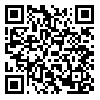BibTeX | RIS | EndNote | Medlars | ProCite | Reference Manager | RefWorks
Send citation to:
URL: http://jdm.tums.ac.ir/article-1-193-en.html
Background and Aim: Diagnosis of occlusal caries in early stages is more difficult than other types, and needs practical proficiency and accuracy as well as application of advanced and modern equipments. The aim of this study was to evaluate the variations among dentists in diagnosis of occlusal caries.
Materials and Methods: In this descriptive cross-sectional study, 6 permanent first molar teeth of 8-10 years old children with occlusal caries of 1, 2 and 3 degrees were selected (Espelid method). Color photographs and bitewing radiographs of teeth were displayed on computer monitor and 157 general dentists were asked to determine the existence and depth of caries. Data were analyzed using SPSS software and chi-square test. P<0.05 was considered as the level of significance.
Results: 94% of dentists did not diagnose any lesion in grade I caries.3.8% reported enamel caries (correct diagnosis) and 1.9% reported dentin caries. In grade II caries, 15.7% of dentists could not diagnose any caries, 60.7% recognized the caries at the level of enamel (correct diagnosis), and 22.31% reported the dentin level, and 1.3% reported pulp exposures.7% of dentists could not diagnose any caries in grade III, while 27.2% recognized lesions at enamel and 58.9% at dentin level (correct diagnosis), 6.1% of dentists reported pulp exposures and 0.3% did not respond. Female dentists showed significantly higher correct diagnosis compared to males (p=0.013).
Conclusion: Based on the results of this study, despite considerable variations among general dentists in diagnosis of occlusal caries, the total accuracy was acceptable.
Received: 2007/02/21 | Accepted: 2007/12/25 | Published: 2013/08/20
| Rights and Permissions | |
 |
This work is licensed under a Creative Commons Attribution-NonCommercial 4.0 International License. |




